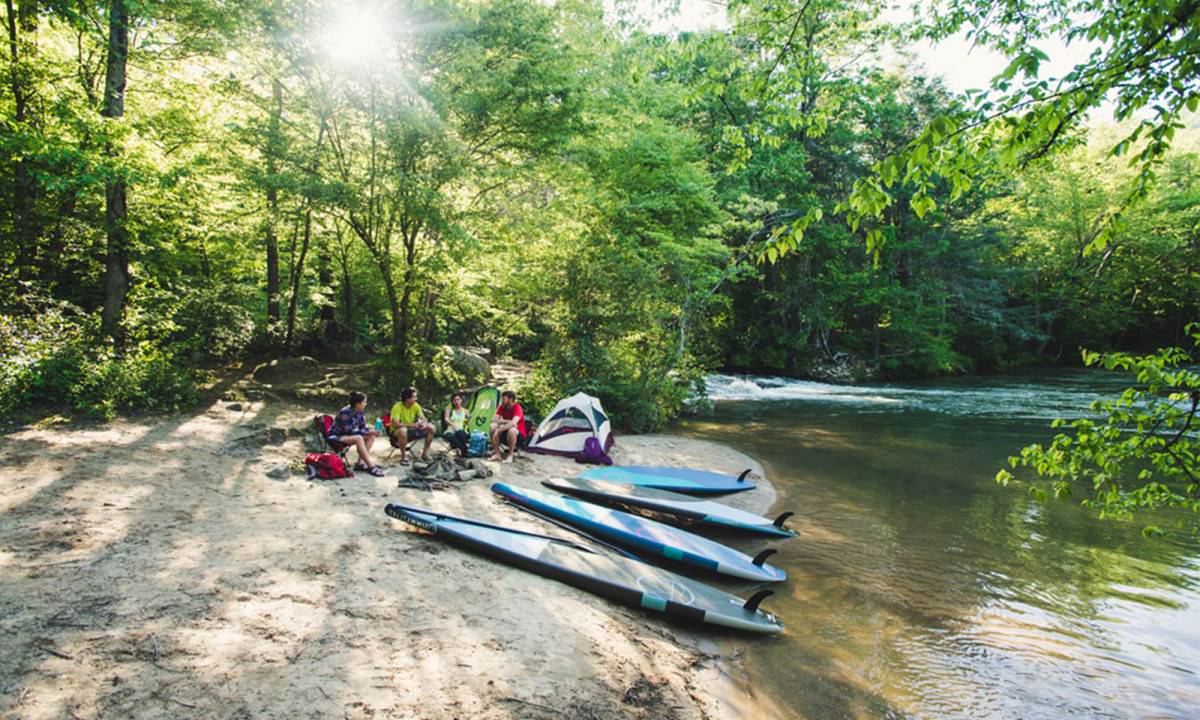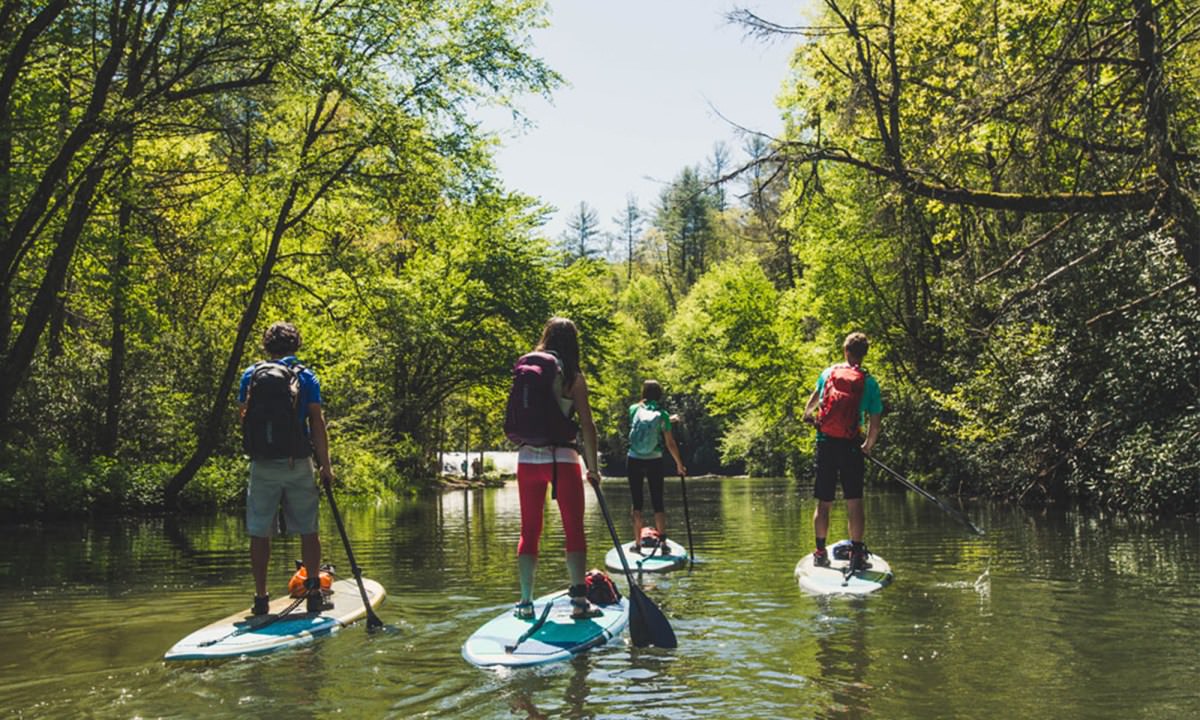You’ve probably tried—or are already way into—stand-up paddle boarding by now. But have you tried taking your SUP camping?
It’s a rad way to spice up an otherwise easy, nearby overnight. It forces you into the ultralight category of camping gear, testing your minimalist skills—and your paddling skills—in properly loading the deck of your board with everything you’ll need for a night out.
We just got back from a weekend of camping and paddling at the Camelbak Pursuit series, and here’s a little bit of what we learned about how to go SUP camping From our friends at Jimmy Styks, one of the brands leading the SUP innovation and versatility movement.

Create a Plan:
Your SUP camping plan should take into account: experience level; what type of board is being used (Epoxy construction vs. Inflatable vs. HDPE—there are pros and cons for each); location (lake, river, ocean); length of trip (# of days); trip distance (how much paddling is required); and weather.
Josh Silva of Jimmy Styks had the following tips for your first SUP camping trip:
- Start small
- Stay close to shore
- Inform someone of your plans
- Do a dry run with packed items before going out for the real thing overnight
- Have fun
SUP Safety:
Three Critical pieces of gear to ensure a safe/enjoyable SUP camping experience, according to Silva:
- Lifejacket/PFD: SUP’s are considered a watercraft by the US Coastguard and require a life jack or PFD at all times.
- Leash: Always wear a leash to ensure that the board does not get away from you in the event you fall off.
- Whistle: In the event you get lost or need to be evacuated from a location, a whistle will help first responders locate you.
Pro Tip: “Ditch Bag"
Pack critical gear into one “ditch bag." In the event you need to leave the board behind have one bag you can grab and go that has everything you would need to be safe.
Camping Gear:
Pack light: This doesn’t mean don’t bring enough stuff for the trip, but means that any items you do pack are light in weight. Weight impacts board buoyancy and paddle efficiency especially for longer trips.
Water, food, fuel (consumables): What are the fresh water sources available during the trip? How much water can you pack? Will you need to bring iodine tablets, boil water or a water filter? How much food will need to be packed? Think high calorie/protein and easy to pack. Will you need fuel for fire to cook or boil water during the trip? How will you light the fire?
Packing gear: Packing gear will take some trial and error depending on board type. That’s why a dry-run is very helpful. Gear weight should be evenly balanced so as not to impact the board’s performance. Use dry bags to keep gear from getting wet and bungie cords to secure bags to board.
 Camping Packing List
Camping Packing List
- Tent or hammock
- Dry Bags (various sizes)
- Food
- Water: Filter or Tablets
- Sleeping Bag
- Small stove and fuel
- Clothes (Quick-Dry Fabrics)
- Toiletries
- Multi-Tool
- Compass
- Headlamp
- Hat
- Garbage Bag
- Solar Charger
- Pump (iSUP Only)
Safety Gear
- Lifejacket or PFD (Personal Flotation Device)
- Leash
- Whistle
- Extra Paddle
- First Aid Kit
- Board Repair Kit
- Float Plan
- Hand Held Radio
- Waterproof Map
- Permits (If Required)
- Nylon Rope (50 feet)
- Flares and Matches (in dry bag)
- Sunscreen
